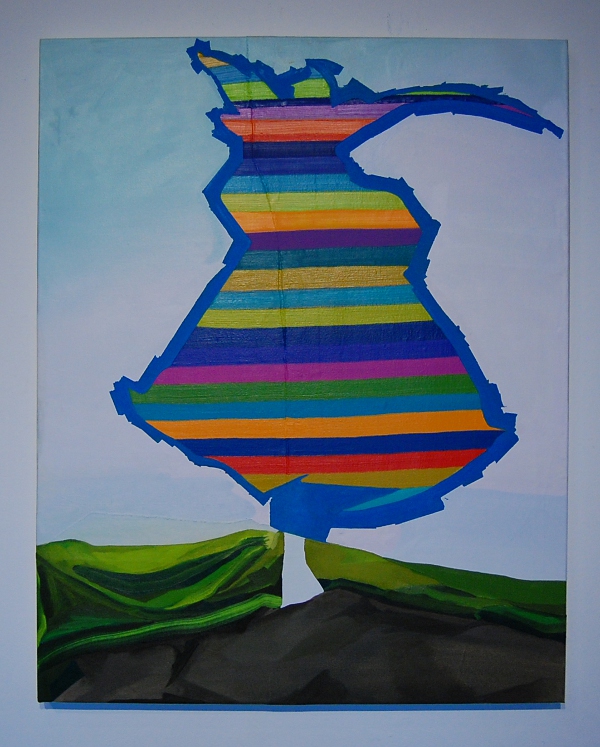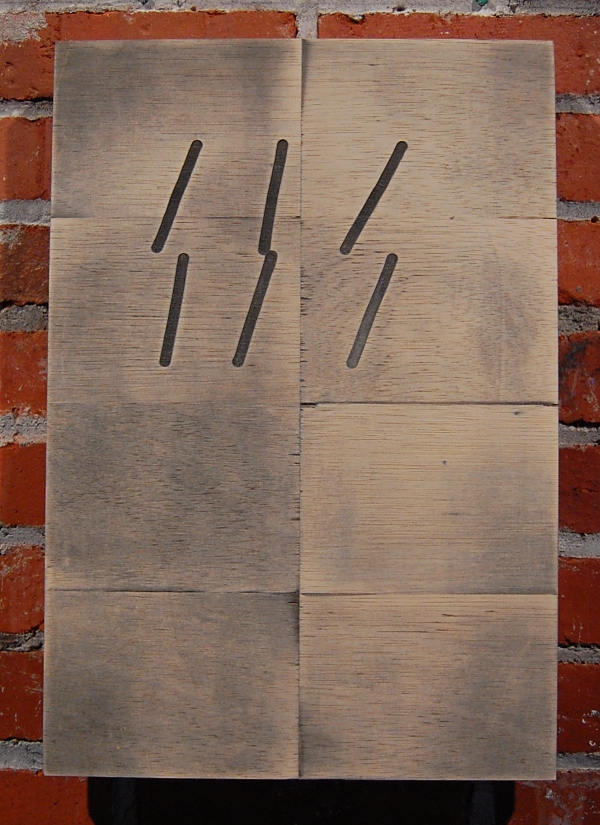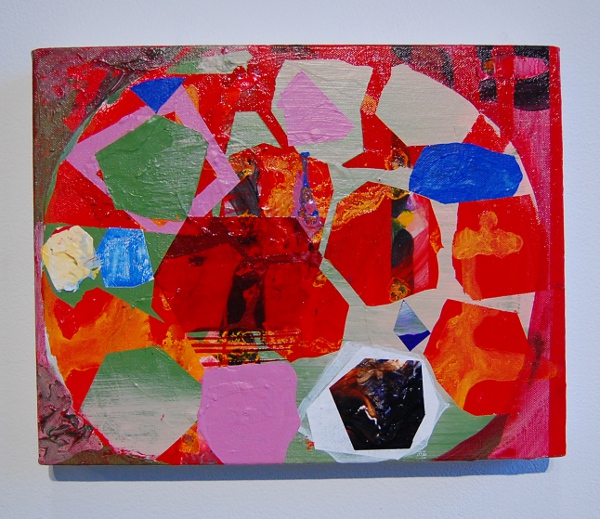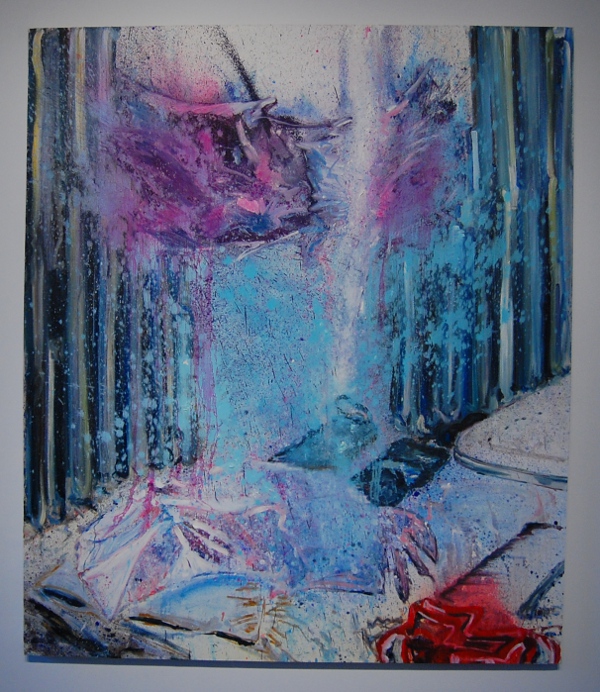
North Philly abstractions in “Dirty Pretty Things”
In Gallery 102 of the Crane Arts Building, artist Fabian Lopez has organized a group exhibit called “Dirty Pretty Things,” which includes eight artists working in the vein of abstraction. As the curator, Lopez selected artists he knew that lived in geographical proximity to himself and one another. All of the work on display was created by individuals residing in North Philly or Fishtown.
The show’s title is drawn from the E.E. Cummings poem “Anyone Lived in A Pretty How Town” and examines the way that artists from the same general area cultivate their ideas. Insights are revealed into the way images emerge and diverge from artists working in relative closeness to one another. Many individual perspectives are represented in the show, which provides a cross-section of work from north of Girard Avenue. The city is an unquantifiable experience, but Lopez boils it down to 11 pieces of art.
Lopez himself has two paintings in the show, one of which is particularly striking. The painting “Atoms Spring” appears somewhat like a landscape with a horizon, a light blue sky and a greenish field. Instead of a typical pastoral scene, however, there are no houses or anything even remotely recognizable. The form Lopez paints seems massive but lightweight. It is flat, yet jagged around the edges. Its outline is painted in a thick blue stroke reminiscent of painters’ tape. In the center, bars of alternating bright colors provide this organic image with energy.
In the middle of the room, one of the building’s support columns has been yarn-bombed by Jessie Hemmons. Three of the four sides are colorful pixilated squares of color which mimic the hues in Lopez’s painting and others. The fourth side is knitted in lines of blue which faces the window andPhiladelphia’s hot, blue summertime skies.
Ryan McCartney, “fold.”
Hanging on the window side are works by Ryan Patrick McCartney and John Roebas. Both seem more like objects than paintings, and each reveal something about their composition. The canvas by Roebas is slick and oily, and appears to be falling apart, betraying its existence as a flat painting surface. McCartney’s work is much more organized: eight wooden panels lightly pigmented. Seeming to fall from the above the work are six silhouettes which look something like popsicle sticks.
Rubens Ghenov, “Red.”
Rubens Ghenov works in his collage-like style but also takes an extra-abstract detour in “Red.” The canvas is covered in polygons which resemble pentagons or hexagons but remain asymmetrical. The shapes seem to move in a radial pattern around the edges of the canvas and within them the paint seems to mix and mingle like liquid.
Christopher Hartshorne is the deviation here in terms of color. He works with a limited palette of black woodblock prints on white paper. His meandering forms are chaotic and complex, yet devoid of the bright colors present in Ghenov or Lopez’s works.
Shanna Waddell, “Transitional Death Space.”
Dustin Campbell and Shanna Waddell tie up any loose ends with their large paintings. Waddell works in pinks and light blue pastel paints, creating a bright and explosive scene in “Transitional Death Space.” Campbell’s “All the Good Things Have Been Taken” expresses some postmodern dismay in its title and the bold lines on top of faceted gray blocks are like a car crash between Kandinsky and a Cubist.
The images in “Dirty Pretty Things” are intriguing in that they show the similarities and variety present in the abstraction coming out of North Philadelphia. These are absolutely not the only eight artists in an area brimming with art, but Lopez picks a group that seems both cooperative and consistent.
The Crane Arts Building is located at 1400 N. American St., Philadelphia; 215-232-3203; cranearts.com.
Recent Content
-
Artsarticle ·
-
Artsarticle ·
-
Artsarticle ·




